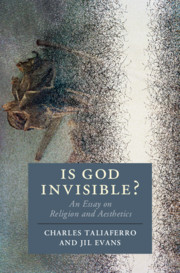Book contents
- Is God Invisible?
- Cambridge Studies in Religion, Philosophy, and Society
- Is God Invisible?
- Copyright page
- Contents
- Figures
- Web Figures
- Acknowledgments
- Introduction
- 1 Aesthetic Personalism
- 2 Is God Invisible?
- 3 The Gates of Perception
- 4 The Perception of Gates
- 5 The Beautiful Gate
- 6 Revealing and Concealing
- 7 Public Perception of Religious and Art Objects
- 8 A Personal Guide to the Aesthetic Experience of Works of Art
- Epilogue
- Index
4 - The Perception of Gates
Published online by Cambridge University Press: 30 March 2021
- Is God Invisible?
- Cambridge Studies in Religion, Philosophy, and Society
- Is God Invisible?
- Copyright page
- Contents
- Figures
- Web Figures
- Acknowledgments
- Introduction
- 1 Aesthetic Personalism
- 2 Is God Invisible?
- 3 The Gates of Perception
- 4 The Perception of Gates
- 5 The Beautiful Gate
- 6 Revealing and Concealing
- 7 Public Perception of Religious and Art Objects
- 8 A Personal Guide to the Aesthetic Experience of Works of Art
- Epilogue
- Index
Summary
In the midst of a fierce storm with brilliant light and flashing fire, four bronze figures emerge with the faces of a man, lion, bull, and eagle. There is a profusion of extended wings, along with lightning, wheels, a scroll, and a prophet, who is commissioned to exhort Israel to repentance, warning about the forthcoming fall of Jerusalem.
The thunderous, cascading opening passages of the sixth-century BCE Book of Ezekiel in the Hebrew Bible led some twentieth-century commentators to speculate whether it was actually a description of an alien spaceship landing. What seems more reasonable to assume is that interpreting the sacred texts of great religious traditions requires acquaintance with the meaning and history of the people and cultures in which these texts took shape.
- Type
- Chapter
- Information
- Is God Invisible?An Essay on Religion and Aesthetics, pp. 63 - 89Publisher: Cambridge University PressPrint publication year: 2021

